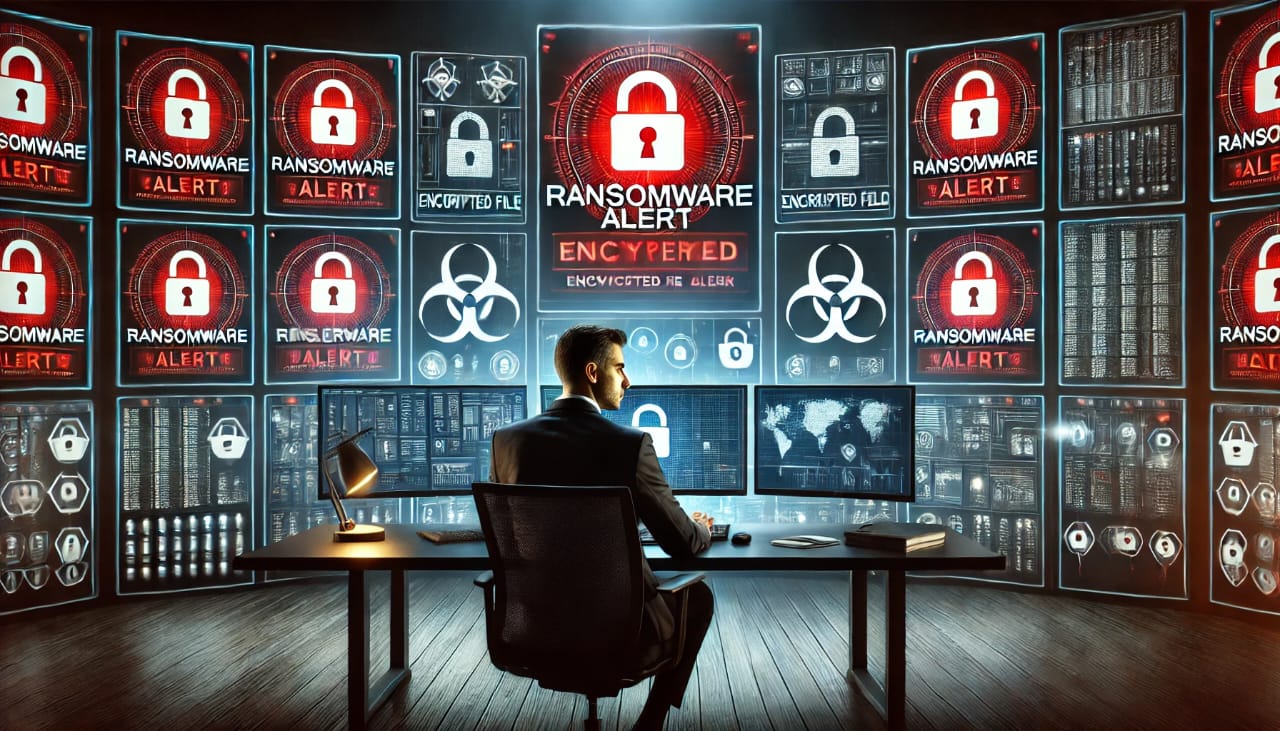The Growing Threat of Ransomware: How to Protect Your Organization
 Jayant yadav
Jayant yadavTable of contents

Ransomware attacks have become one of the most dangerous cyber threats today. They can disrupt businesses and compromise sensitive data, leading to serious financial losses and operational chaos. From healthcare to energy, industries worldwide have suffered millions in damages, highlighting the importance of understanding ransomware and learning how to protect against it.
What is Ransomware?
Ransomware is a type of malicious software that locks or encrypts a victim's files, making them inaccessible. The attackers then demand a ransom, usually in cryptocurrency, in exchange for the decryption key. If the victim doesn’t pay, they risk losing their data or having it exposed to the public.
Ransomware typically infiltrates systems through phishing emails, malicious downloads, or by exploiting software vulnerabilities. Variants like WannaCry, Ryuk, and Sodinokibi (REvil) have caused significant global disruptions, using different methods but sharing the same goal: extortion.
Why is Ransomware Becoming More Dangerous?
Ransomware has evolved into a highly organized and profitable criminal enterprise. Here are three trends making it even more threatening:
1. Targeting Critical Infrastructure
Attackers now focus on vital sectors like healthcare, power grids, and transportation. The high stakes pressure many organizations into paying substantial ransoms.
2. Double Extortion
Attackers not only encrypt data but also steal it, threatening to release sensitive information if their demands aren’t met, increasing pressure on victims.
3. Ransomware-as-a-Service (RaaS)
RaaS allows cybercriminals, even those with limited technical skills, to rent ransomware tools for attacks. This has led to an increase in both the frequency and sophistication of attacks, with profits shared between attackers and RaaS providers.
Why is Ransomware So Dangerous?
Ransomware doesn’t just disrupt systems; it can create a business crisis. Here’s why it’s so damaging:
Financial Losses
Ransom demands can range from thousands to millions of dollars. The ransom itself is often just the beginning, with additional costs for recovery, legal fees, and long-term reputational damage.
Data Breaches
Many ransomware attacks lead to data breaches, resulting in legal issues and a loss of customer trust, particularly under laws like GDPR or HIPAA.
Business Disruption
Ransomware can halt company operations entirely, rendering employees unable to work and leading to lost revenue.
How Can You Protect Your Organization?
While ransomware is a serious threat, several steps can help defend against it:
1. Back Up Your Data
Regular backups are crucial for data recovery without paying a ransom. Ensure backups are tested frequently.
2. Patch Your Systems
Keep your software and systems updated to close any security vulnerabilities attackers might exploit.
3. Train Your Employees
Regularly educate employees on identifying phishing attempts and other cyber threats—they are often the first line of defense.
4. Use Endpoint Protection
Advanced security tools like antivirus and Endpoint Detection and Response (EDR) can detect and block ransomware early.
5. Segment Your Network
Network segmentation can contain attacks. If one part of your network is compromised, segmentation prevents it from spreading to more critical areas.
6. Implement Multi-Factor Authentication (MFA)
Adding an extra layer of security, MFA ensures that even if login credentials are stolen, attackers can't easily access your system.
7. Have an Incident Response Plan
A clear incident response plan is key to minimizing damage if an attack occurs. This plan should include communication protocols with employees, customers, and authorities.
8. Monitor for Threats
Use threat intelligence services to detect unusual activity on your network, enabling you to respond before attacks escalate.
Should You Pay the Ransom?
Paying the ransom might seem like a quick solution, but it comes with risks:
No Guarantee
There’s no assurance that attackers will provide the decryption key after payment.
Encourages More Attacks
Paying a ransom funds further criminal activity, making ransomware attacks more profitable for cybercriminals.
Legal Issues:
In some cases, paying a ransom could be illegal if the attackers are linked to sanctioned entities. Always consult legal experts before making decisions.
Most experts, including law enforcement, advise against paying ransoms. Instead, focus on prevention and recovery.
Final Thoughts:
Ransomware is a growing threat that can affect any organization. But with proactive security measures—such as regular backups, strong security controls, and employee training—you can reduce the risk. As ransomware tactics evolve, so must your defenses. Stay informed and vigilant to protect your organization from potential attacks.
Subscribe to my newsletter
Read articles from Jayant yadav directly inside your inbox. Subscribe to the newsletter, and don't miss out.
Written by
